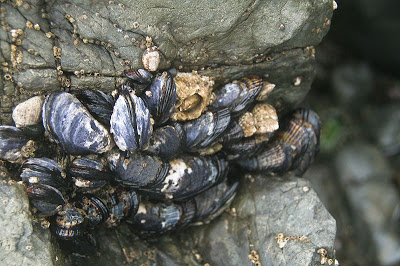An adhesive inspired by the oyster can help fuse blood vessels and connect them - a significant medical challenge that many companies are trying to tackle.

Infection of blood vessels is a significant challenge in the world of medicine. The infection is done in a wet environment, when the blood vessel is full and pulsating. Also, fusing a tissue with many small blood vessels is not easy, and a deep cut may end up with several unpleasant stitches at all.
The ambition of doctors and nurses, to nurse tissues and wounds without stitches and staples, has yielded several solutions to date. Researchers at Columbia University have come a long way in this direction. The glue used by the oyster to stick to the surface of the sea rock, to ships and docks, inspired a medical glue, which can glue torn blood vessels and reconnect them.
The researchers synthesized a gel, inspired by the amino acids that oysters use to stick in a wet and challenging environment like the ocean. In the oyster, the glue combines two factors that are important for medical adhesion: (1) strength - which allows two elements to be glued together and (2) flexibility - which allows the glued element to continue to function in its environment.
The gel developed inspired by the oyster has great resistance, and it remains fixed in place despite the dynamic environment, characterized by high flow speeds, but it can also tilt like a reed in the direction of the flow. These properties allow the material to adhere to blood vessels or allow the repair of blood vessels, without being carried away in the bloodstream.
The research also shows that the gel's shearing forces can help strengthen blood vessels with fragile walls. In addition, by creating a barrier between the blood and the blood vessel wall, the gel can prevent inflammation, which usually occurs after a stent is inserted to widen the blood vessels. The widest application for the gel is the prevention of plaque drift in blood vessels. Such a drift may cause heart attacks or strokes, hence the importance of development. The oyster-inspired gel was tested on mice and showed a significant improvement in plaque stability in blood vessels.
Although the gel at this stage is intended for the repair and adhesion of blood vessels only, and is not suitable for the treatment of injuries on the surface of the skin, the researchers believe that another application - no less interesting - is the use of the gel as part of various dressing aids to speed up the healing process of damaged tissue.
Source of knowledge
